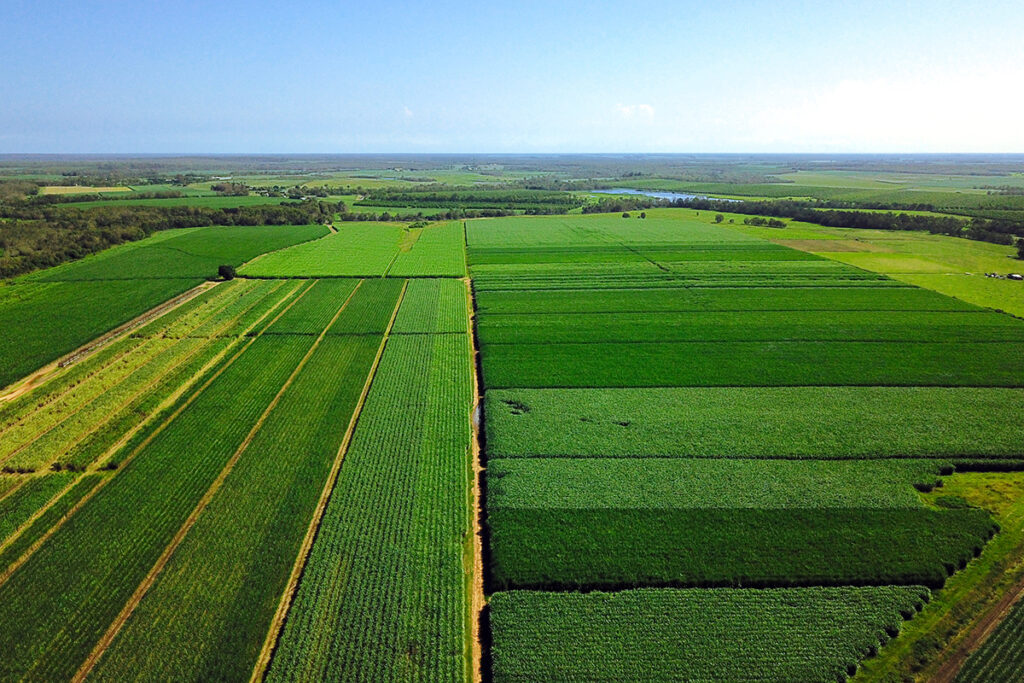
Economist Ben Artup writes the Bundaberg Region is well poised to recover from COVID-19 thanks to a diverse economy and the strength of local agriculture.
COVID-19 will forever mark a point in Australia’s economic history. COVID-19 will be used alongside terms such as GFC, the Asian Economic Crisis, the “recession we had to have” and the “Banana Republic” statement in the 1980s.
Australia is now in its first technical recession since the early 1990s. If Australia’s track record in bouncing back from recessions is any predictor of the next 12 months, most expect the nation’s economy to rebound far quicker than other countries, like we usually do.
This is because as a nation we typically do one thing extraordinarily well in an economic crisis, that is our federal treasury is good at spending money to prop up the economy when it slows.
In this crisis, the government got money into the pockets of job seekers and businesses faster than ever. In this crisis, most Australians also listened to health advice, which helped contained the spread of the coronavirus and its economic fallout.

However despite this, not all regional economies have faired the same through COVID-19, nor will they all re-emerge like before.
For some regions, COVID-19 will be the beginning of a spiralling vicious cycle from which some may not recover. For others, it will be the beginning of a virtuous circle of opportunity forced by the necessity to respond to a crisis.
In a post COVID-19 world, our region’s destiny will be determined by a mix of hard work and good management, along with a growth mindset among our businesses community that sees opportunity in a time of turmoil.
But before we look at why Bundaberg is better positioned than other regions to recover from COVID-19, let’s look at the data emerging about how our economy has performed since COVID-19 began earlier this year.
Data released recently by the Australian Bureau of Statistics (ABS) and the National Institute of Economic and Industry Research (NIEIR) in partnership with Profile ID, paints a picture of how our region’s economy has performed (so far) during COVID-19.
Yes jobs are down
According to the ABS, in April 2020 the Wide Bay Burnett lost 13,300 jobs in a single month, falling from 113,100 to 99,800, or by roughly 11.5%. Since then, the number of jobs has bounced back to between 103,400 and 108,000.
In annual terms, between August 2019 to August 2020 the Wide Bay Burnett lost 10.5% of the region’s job stock, falling from 115,500 to 103,400. Most of this loss occurred after April when the nation went into lockdown.
In Bundaberg however, according the NIEIR we have fared much better, shedding jobs at a rate of just 4.1% between September 2019 and September 2020.
While there are issues comparing data sets from different agencies over slightly differing time periods, if modelling by NIEIR is credible, Bundaberg lost jobs at less than half the rate of the Wide Bay Burnett. Our rate of COVID-19 related job losses is similar to national and state averages, also modelled by NIEIR.
Participation is constant
The ABS also reports the Wide Bay Burnett’s labour force participation rate in August 2020 sat at 48% – identical to what it was two years earlier in August 2018. The only break in the region’s longer-term labour force participation trend was in April 2020 when it hit 45%, quickly rebounding back to 50% in July.
So this is encouraging data showing job seekers are as confident now about finding work in the future, as they were before COVID-19 started1.
Unemployment is up
Unemployment across the Wide Bay Burnett was on the rise before COVID-19, likely as a result of the drought and the knock-on impacts of the Australian bushfires which affected tourism and other sectors late last summer.
Hitting a peak of 16.9% in July 2020, the unemployment rate of the Wide Bay Burnett will hopefully fall with a mixture of continued stimulus, some good rain and returning business confidence that sees jobs created across the region.
Gross regional product has held up well
However the most positive data pointing to the resilience of Bundaberg’s economy during COVID-19 is NIEIR modelling showing our region’s economy has, during the worst economic crisis in almost 30 years, only shrunk by 1.2% over the 12 months to September 2020.
This is compared to a 4.7% fall in the size of the Australian economy for the same period, and a 3.1% fall in the size of the state economy.
And this resilience places Bundaberg’s economy in a good position to recover from COVID-19 in 2021.
This resilience is a testament to the diversity of industries our region relies upon, namely health, education and agriculture that make up about a third of our local economy.
During COVID-19, health and education’s contribution to GRP grew (as you may expect), while agricultural output remained constant (which you may not expect). These three sectors offset large falls in output by accommodation and recreation, that typically encompass tourism activity.
Combined with smaller movements in output by other industries, the net effect on the size of our local economy was a marginal fall of only 1.2%.
While you may expect health and education to grow during a pandemic, our agricultural strength is unique. Agriculture is our most valuable local industry and has weathered COVID-19 brilliantly with its economic output remaining constant.
Notably, our agricultural sector is about the same size as our manufacturing and construction industries, each contributing about one billion to GRP annually. However of our three ‘billion-dollar industries’, agriculture was the only one not to shrink during COVID-19.
And this is a strong reason to believe our region will recover from COVID-19 better than most. There are also plenty of examples where we can see local producers and agricultural suppliers busier than ever during COVID-19.
Luck favours hard work
As the lucky country, Bundaberg has ridden various waves of success delivered by our regions natural advantages of climate, soils, and water security. However relying on luck alone is risky, nor will it be enough to come out the other side of COVID-19 stronger than before.
Our agricultural industry is smart and hard working, with many producers regularly innovating into new products and markets, or more recently pivoting in response to COVID-19.
This resilience is seen in examples like a local herb farm that created herb-bouquets when herb markets closed during the peak of COVID-19.
Like Oreco and Essential Queensland at Childers who are both expanding and creating local jobs through new agricultural-based products.
Like Sweet Potatoes Australia who soon plan to have Bundaberg-grown sweet potatoes in the frozen-aisle section of Australian supermarkets.
Like Tinaberries who diversified their strawberry farm to offer strawberry ice-cream eating farm experiences in response to a short-term cash flow challenge.
And this list is only just a few examples of our hard-working innovative local agricultural businesses who will springboard our regional recovery from COVID-19.
So it’s fair to conclude that based on emerging data and observing what’s occurring across the region, Bundaberg’s agricultural industry has provided resilience against the economic headwinds buffeting the rest of Australia.
Growth mindset required
But to fully recover – or take advantage – of whatever recession Bundaberg does experience over the next 12 to 18 months, we need more local businesses with a growth mindset, like those described above.
Growth mindset businesses, opposed to lifestyle mindset businesses, will be better placed to take advantage of opportunity.
With the right mindset, more local businesses will see opportunities available in Bundaberg. These businesses will also be the ones most likely to create the jobs our region needs to succeed.
Industry assistance programs by the state and federal governments, along with many Council-designed initiatives to support agriculture will be particularly important in managing our response out of the economic crisis.
These programs will play small, but important parts, in helping build the confidence business will need to adapt and prosper over the next year.
In fact federal treasury list business confidence as being one of the main thing Australia needs (in addition to a vaccine) to address if the nation is to return to positive growth in 2021.
Commonly the most successful businesses are created during the ashes of recessions. The destructive processes of recessions force businesses to innovate. But it takes a certain mindset to see a crisis as a creative opportunity. However many Bundaberg businesses already seem to be doing a great job in this regard.
Local businesses that do choose to grow, will most likely survive, and will be far better positioned for success in a post COVID-19 world.
* Ben Artup is Bundaberg Regional Council’s Executive Director Strategic Projects and Economic Development
1 See here for an explanation of the labour force participation rate.





So why is the council insisting that farmers pay higher rates and not assisting them with their viability.